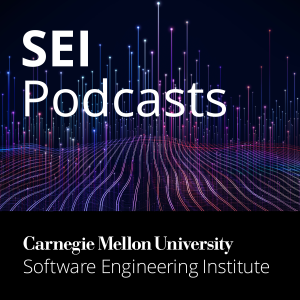In this podcast from the Carnegie Mellon University Software Engineering Institute (SEI), Gregory J. Touhill, director of the SEI CERT Division, talks with principal researcher Suzanne Miller about the 2020 attack on Solar Winds software and how to prevent a recurrence of another major attack on key systems that are in widespread use. Solar Winds is the name of a company that provided software to the U.S. federal government. In late 2020, news surfaced about a cyberattack that had already been underway for several months and that had reportedly compromised 250 government agencies, including the Treasury Department, the State Department, and nuclear research labs. In addition to compromising data, the attack resulted in financial losses of more than $90 million and was probably one of the most dangerous modern attacks on software and software-based businesses and government agencies in the recent past. The SolarWinds incident demonstrated the challenges of securing systems when they are the product of complex supply chains.
In this podcast, Touhill discusses topics including the need for systems to be secure by design and secure by default, the importance of transparency in the reporting of vulnerabilities and anomalous system behavior, the CERT Acquisition Security Framework, the need to secure data across a wide range of disparate devices and systems, and tactics and strategies for individuals and organizations to safeguard their data and the systems they rely on daily.
More Episodes
More Targeted, Sophisticated Attacks: Where to Pay Attention
 2009-05-26
2009-05-26
Is There Value in Identifying Software Security "Never Events?"
 2009-05-05
2009-05-05
Cyber Security, Safety, and Ethics for the Net Generation
 2009-04-14
2009-04-14
An Experience-Based Maturity Model for Software Security
 2009-03-31
2009-03-31
Mainstreaming Secure Coding Practices
 2009-03-17
2009-03-17
Security: A Key Enabler of Business Innovation
 2009-03-03
2009-03-03
Better Incident Response Through Scenario Based Training
 2009-02-17
2009-02-17
An Alternative to Risk Management for Information and Software Security
 2009-02-03
2009-02-03
Tackling Tough Challenges: Insights from CERT’s Director Rich Pethia
 2009-01-20
2009-01-20
Climate Change: Implications for Information Technology and Security
 2008-12-09
2008-12-09
Using High Fidelity, Online Training to Stay Sharp
 2008-11-25
2008-11-25
Integrating Security Incident Response and e-Discovery
 2008-11-11
2008-11-11
Concrete Steps for Implementing an Information Security Program
 2008-10-28
2008-10-28
Virtual Communities: Risks and Opportunities
 2008-10-14
2008-10-14
Developing Secure Software: Universities as Supply Chain Partners
 2008-09-30
2008-09-30
Security Risk Assessment Using OCTAVE Allegro
 2008-09-16
2008-09-16
Getting to a Useful Set of Security Metrics
 2008-09-02
2008-09-02
How to Start a Secure Software Development Program
 2008-08-20
2008-08-20
Managing Risk to Critical Infrastructures at the National Level
 2008-08-05
2008-08-05
Analyzing Internet Traffic for Better Cyber Situational Awareness
 2008-07-28
2008-07-28
Create your
podcast in
minutes
- Full-featured podcast site
- Unlimited storage and bandwidth
- Comprehensive podcast stats
- Distribute to Apple Podcasts, Spotify, and more
- Make money with your podcast
It is Free

- Privacy Policy
- Cookie Policy
- Terms of Use
- Consent Preferences
- Copyright © 2015-2024 Podbean.com



 iOS
iOS Android
Android

